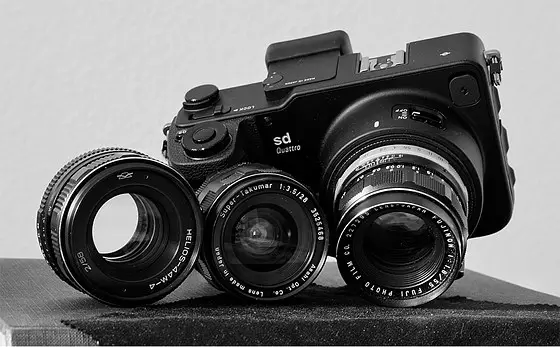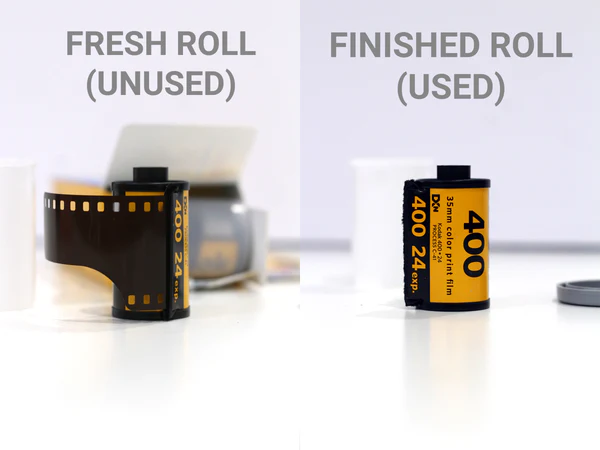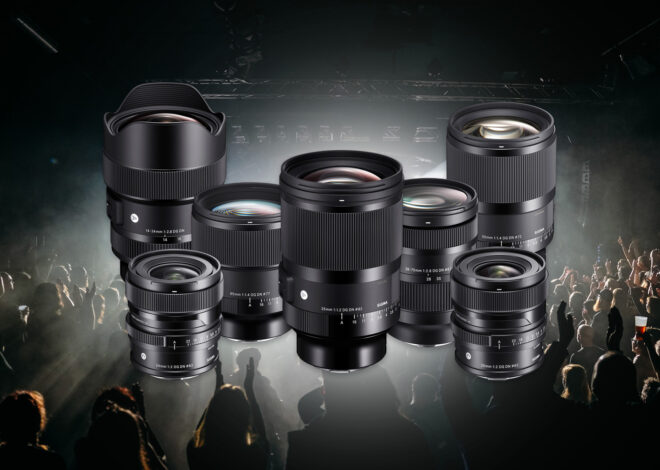
7 Best Lenses for Sigma SD Quattro in 2024 (The Ultimate Review)
As an Amazon Associate, I earn from qualifying purchases.
Sigma SD Quattro is one of Sigma’s mirrorless camera systems in the market. With the introduction of the sd Quattro Mirrorless Camera, Sigma is turning the traditional approach to camera development.
The main goal was to create a camera that is expressly designed to benefit from the Global Vision lens family. But what is the best lens for Sigma SD Quattro?
Here in this article, you will know about the best lens for Sigma SD Quattro. You will also know about the specification and the additional features.
Best Lenses for Sigma SD Quattro: The Review
| Lenses | Lens Type | Buying Link |
| 1. Sigma 18-35mm f/1.8 DC HSM Art Lens | All in One | Sigma 18-35mm f/1.8 DC HSM Art Lens |
| 2. Sigma 50-100mm f/1.8 DC HSM Art lens | Telephoto | Sigma 50-100mm f/1.8 DC HSM Art lens |
| 3. Sigma 135mm f/1.8 DG HSM Art Lens | Portrait Lens | Sigma 135mm f/1.8 DG HSM Art Lens |
| 4. Sigma 12-24mm f/4 DG HSM Art Lens | Ultra Wide | Sigma 12-24mm f/4 DG HSM Art Lens |
| 5. Sigma 40mm f/1.4 DG HSM Art Lens | Wide Normal Length | Sigma 40mm f/1.4 DG HSM Art Lens |
| 6. Sigma 17-50mm F/2.8 EX DC OS HSM | Zoom Lens | Sigma 17-50mm F/2.8 EX DC OS HSM |
| 7. Sigma 24-70mm F/2.8 DG OS HSM Art | Zoom Lens | Sigma 24-70mm F/2.8 DG OS HSM Art |
Now Here I will be discussing the lenses I have mentioned. Most of them are Sigma lenses that will go with the Sigma SD Quattro easily. And I will elaborately explain why you will pick these lenses and talk about the specs and features.
The individual review for every lens is given below.
1. Sigma 18-35mm f/1.8 DC HSM Art Lens

Specs:
- Lens Configuration: 17 elements 12 groups
- Focal length: 18 to 35mm (27mm to 52.5 mm format equivalent)
- Lens Mount: Sigma SA
- The angle of View: 76.5 degrees to 44.2 degrees
- Min and Max aperture: F16 to F1.8
- Minimum Focus Range: 28cm
- Maximum Magnification: 0.23X
- Focus Type: Auto Focus
- Image Stabilization: No
- Filter Size: 72mm
- Weight: 1.78 lb or 810 g (Approx.)
The lens is fast and versatile in design. The 35mm focal length is good enough to cover the wide angle. This zoom stands out from the rest because of its very brilliant f/1.8 constant maximum aperture, which is suitable for usage in difficult lighting situations and provides a superb depth of field control across the zoom range.
The Lens provides a 27-52.5mm equivalent focal length. With the nice aperture range, the lens can take very good photos with clarity and sharpness.
The bright f/1.8 aperture is for working in low light conditions. Pairing the lens with the Sigma SD Quatrro you will get outstanding photos.
The lens has 17 elements in 12 groups and very little chromatic aberration. The four aspherical components are used in the lens to reduce distortion and spherical aberration.
The HSM from the name stands for Hyper Sonic Motor. It works in the focusing system of the lens. The Autofocus is nice and fast and the Nine-Blade diaphragm gives you a smooth and good bokeh effect.
To update the firmware simply use the Sigma USB dock.
The lens has a multi-layer coating keeping it safe from dust and moisture.
2. Sigma 50-100mm f/1.8 DC HSM Art lens

Specs:
- Lens Configuration: 21 elements 15 groups
- Focal length: 50 to 100mm (75mm to 150 mm format equivalent)
- Lens mount: Sigma SA
- Lens format coverage: APS-C
- The angle of View: 31.7 degrees to 16.2 degrees
- Min and Max aperture: F16 to F1.8
- Minimum Focus Range: 95 cm
- Maximum Magnification: 0.15X
- Focus Type: Auto Focus
- Diaphragm Blades: 9, Rounded
- Image Stabilization: No
- Filter Size: 82mm
- Weight: 3.28 lb or 1490 g (Approx.)
The Sigma 50-100mm f/1.8 DC HSM is an Art series telephoto lens for Sigma cameras. The lens is vastly used because of its availability and versatility.
The lens is designed to achieve the most optimal performance for creative and artistic usage. This is why the series is named ART.
The telephoto zoom is designed for APS-C format Sigma cameras and provides a 75-150 mm equivalent focal length. The focus is very fast and smooth thanks to the Hyper Sonic Motor. You won’t get any lens noise zooming in or out while recording videos.
The zoom range’s chromatic aberrations and color fringing are significantly reduced by the lens’s three F Low Dispersion elements and four Special Low Dispersion elements.
The 21 elements 15 groups reduce spherical aberrations for improved sharpness and clarity.
The lens is a bit heavy as it is a telephoto lens. The weight of the lens is 1490 g. with the Sigma SD Quattro it feels a bit odd as the camera is very lightweight.
However, the combination is very solid as the weight distribution of the camera and the lens are very balanced.
The rounded nine-blade diaphragm is made of sturdy polycarbonate and fluorine-coated. The lens body has a carbon feather layer for smooth operation while using high continuous shooting speeds. The lens is thermally stable and the material in the lens is very good assuring precision and the ability to use it in wide temperature variations.
To update the firmware simply use the Sigma USB dock.
3. Sigma 135mm f/1.8 DG HSM Art Lens

Specs:
- Lens Configuration: 13 Elements 10 Groups
- Focal Length: F = 135mm Fixed
- Lens Mount: Sigma SA
- The angle of View: 18.2 Degree
- Min and Max Aperture: F16 to F1.8
- Minimum Focus Range: 87.5 cm
- Lens Format Coverage: Full-Frame
- Max. Magnification: 0.2X
- Weight: 2.49lb or 1130 g
- Filter Size: 82mm
The Sigma SA-mount 135mm f/1.8 DG HSM is a telephoto prime lens for all Sa mount cameras. It is vastly used in portrait photography and the maximum aperture of f/1.8 works really great in low-light situations.
In the Art series, this lens is notable for its optical performance. The telephoto lens provides a 175.5mm equivalent focal length with an APS-H sensor. And a 202.5mm equivalent focal length with APS-C sensors.
The Sigma SD Quattro has the APS-H sensor for its 25.5-megapixel version. The lens can be used with the 19-megapixel APS-C sensor as well.
Using this lens with the 19 MP SD Quattro will give you a small blurry corner if you shoot in a very low light situation. But this is not noticeable at all.
To reduce lens flare and ghosting and help to create rich contrast, and color-neutral picture the lens elements are coated with a Super Multi-layer Coating.
As the lens weighs over a kilogram, It has a bayonet mount to ensure accuracy and durability.
The Hyper Sonic Motor assures smooth fast focusing. The Autofocus is really fast thanks to the combination of the Sigma SD processor and the lens.
4. Sigma 12-24mm f/4 DG HSM Art Lens

Specs:
- Lens Configuration: 16 elements 11 groups
- Focal length: 12 to 24 mm
- Lens mount: Sigma SA, Canon EF
- Lens format coverage: APS-C
- Lens Format: Full-Frame
- The angle of View: 122 degrees to 84.1 degrees
- Min and Max aperture: F22 to F4
- Minimum Focus Range: 24 cm
- Maximum Magnification: 0.2X
- Focus Type: Auto Focus
- Diaphragm Blades: 9, Rounded
- Image Stabilization: No
- Filter Size: None
- Weight: 2.53 lb or 1150 g (Approx.)
This is Sigma’s one of best ultra-wide angle lenses. Vastly used by most photographers.
Canon users often look for this lens for Ultra Wide angle photography.
It has a 19.2 to 38.4mm equivalent focal length for the SD Quattro APS-C model. And the viewing angle is 122 degrees. It covers a lot of fields of view without distorting any of the images.
The F/4 aperture in the lens is really good for taking photos in very low light conditions.
The three aspherical elements control the aspherical aberration distortion. It has 16 lens elements in 11 groups making sure the sharpest image that an Ultra Wide angle lens can deliver.
The focus is very fast and smooth thanks to the Hyper Sonic Motor. You won’t get any lens noise zooming in or out while recording videos. The HSM also permits manual focus by rotating the focus ring.
The design of the lens is very sturdy and it has oil repellent coating to work in harsh environments.
This lens is compatible with the Sigma USB dock for uprating its firmware.
5. Sigma 40mm F1.4 DG HSM “Art”
The Sigma 40mm F1.4 is a wide normal-length lens characterized by a bright design. It is a lens you can use anywhere.

Specs:
- Lens Configuration: 16 Elements 12 Groups
- Focal Length: F=40mm
- The angle of View: 56.8 Degree
- Lens Mount: Sony E, Sigma SA
- Min and Max Aperture: F16 to F1.4
- Maximum Magnification: 0.15x
- Diaphragm Blades: 9, Rounded
- Focus Type: Autofocus
- Image Stabilization: No
- Max. Magnification Ratio: 1:6.5
- Weight: 2.6 lb/ 1200 g
- Filter Size: 82mm
This particular lens is a wide-angle lens with a very good aperture value. It is a bit old lens compared to the lenses I have mentioned. It has a Sony E mount similar to the Sigma SD Quattro APS-C mount.
With the APS-C Sigma SD Quattro model, you will easily get a 60mm equivalent focal length from this lens.
The f/ 1.4 Aperture will give you great bokeh and the wide angle of view will get you covered with the maximum viewing angle. The f/1.4 max aperture gives a shallow depth of field and a very rich bokeh effect that you won’t find from any lens.
The 9-blade diaphragm makes the rich and nice bokeh.
The lens has a super multi-layer coating that helps minimize flare and ghosting for greater contrast. The color accuracy is very nice.
6. Sigma 17-50mm F/2.8 EX DC OS HSM

Specs:
- Lens Configuration: 17 Elements in 13 Groups
- Focal length: 17 to 50mm
- Lens mount: Canon EF
- Lens format coverage: APS-C
- The angle of View: 79.7° to 31.7°
- Min and Max aperture: f/22 & f/2.8
- Minimum Focus Range: 11.02″ / 28 cm
- Maximum Magnification: 0.2x
- Focus Type: Autofocus
- Diaphragm Blades: 7, Rounded
- Image Stabilization: Yes
- Filter Size: 77 mm (Front)
- Weight: 1.2 lb / 565g
With a minimum focusing distance of 11.8″ to accommodate working with up-close subjects, the Sigma 17-50mm F/2.8 EX DC OS HSM lens is perfect for macro photography. It gives a life-size 1:1 maximum magnification.
With a 27.2-80mm equivalent focal length range, this standard zoom lens can be a great choice for your Sigma SD Quattro.
The employment of three aspherical components helps to reduce distortion and spherical aberrations while also enhancing overall sharpness and precise rendering.
This lens’ 17–50mm focal length range is particularly wonderful, making it ideal for photographs inside and outside of the house, landscapes, full-body and head-and-shoulders portraits, up-close sports, and a wide variety of other uses.
In comparison to typical kit lenses at their longest focal length (f/5.6), the Sigma 17-50 OS’ fixed f/2.8 maximum aperture over the whole focal length range offers 4 times as much light to the sensor (2 stops more light). The variation in aperture can have a significant impact on the quality of your images.
The Sigma 17-50’s 4-stop-rated OS (optical stabilization) will be very useful if your subject is not moving. In poor light, the wind, on uneven ground, and other scenarios when keeping a camera steady is challenging and a tripod is not being utilized, you will be able to capture clear handheld photos.
7. Sigma 24-70mm F/2.8 DG OS HSM Art

Specs:
- Lens Configuration: 19 Elements in 14 Groups
- Focal length: 24 to 70mm
- Lens mount: Nikon F
- Lens format coverage: Full-Frame
- The angle of View: 84.1° to 34.3°
- Min and Max aperture: f/22 & f/2.8
- Minimum Focus Range: 1.21′ / 37 cm
- Maximum Magnification: 0.21x
- Focus Type: Autofocus
- Diaphragm Blades: 9, Rounded
- Image Stabilization: Yes
- Filter Size: 82 mm (Front)
- Weight: 2.24 lb / 1020g
The Nikon F-mount 24-70mm f/2.8 DG OS HSM Lens from Sigma is a flexible zoom for everyday shooting that offers a handy wide-angle to portrait-length range of focal lengths to accommodate photographing in different settings.
This lens, which is a member of Sigma’s Global Vision series’ Art line, is made to produce remarkably noteworthy optical performance and is perfect for applications in the arts and design.
While using shallow depth of field techniques, a constant f/2.8 maximum aperture offers a better depth of field control and is well-suited for working in low-light situations.
The lens features an exterior made of plastic and an interior made of a composite material called TSC (Thermally Stable Composite). Additionally, a brass bayonet mount that is meant to be more durable is included. The high-quality glass is used to make the optical components.
The Sigma 24-70mm F2.8 DG OS HSM Art has all the capabilities you would expect from a typical zoom lens. This incorporates built-in vibration reduction that delivers about three stops of correction and is triggered by the OS switch on the lens barrel.
In addition to a high-quality soft casing, the Sigma 24-70mm F2.8 DG OS HSM Art comes with a plastic lens hood in the shape of a petal (LH876-04). It takes 82mm filters.
The Sigma 24-70mm f/2.8 DG OS HSM Art’s optical stabilizer technology reduces the impression of camera shake by up to four stops, which helps to produce clearer images when shooting handheld.
Which One to Choose, Finally?
In terms of lenses, you won’t find a true one in all lenses. So I have to point you down why you will choose this particular lens.
As you know there are plenty of lens varieties in the market. You cannot shoot wide-angle photos with a telephoto lens or vice versa.
So If I have to choose one for the lens for Sigma SD Quattro to shoot wide-angle shots, I will choose the Sigma 12-24mm f/4 DG HSM Art Lens. It is well-balanced with a good viewing angle and aperture value.
For telephotos and portraits, I will go for the Sigma 50-100mm f/1.8 DC HSM Art lens. For shooting portraits, the Sigma 135mm Prime lens will be in the upper ground. But with the 50-100mm, you can easily shoot nice portraits with the SD Quattro.
And last but not least for day-to-day and everyday use I will choose the Sigma 18-35mm f/1.8 DC HSM Art Lens from the all-in-one lens. It is a versatile lens that you can use anywhere you want.
The lenses I have mentioned in the individual discussion are not the same. The selection of the lenses is a personal opinion.
Selection of the best lenses for Sigma SD Quattro will be tough because you know what you want to do and what suits you and your camera.
Frequently Asked Questions
Is Sigma SD Quattro a full frame?
The Sigma SD Quattro is a full-frame mirrorless camera. It has a 24-megapixel sensor.
Is Sigma made in Japan?
Sigma is a Japanese company. Everything in Sigma is manufactured in japan.
What are HSM Sigma lenses?
HSM stands for Hyper Sonic Motor. It uses ultrasonic waves to drive the autofocus motor.
Is Sigma a good quality lens?
The Sigma Art lenses are of the finest caliber and compete with the leading camera manufacturers. You may judge for yourself after viewing the top Sigma Art series lenses.
Are Sigma lenses waterproof?
No, they are not. But the Sigma Art lenses can be used in light rain. That doesn’t completely make them waterproof.
Final Words
So I guess you have known a lot about Sigma SD Quattro lenses. It was a great time for me to discuss all of these.
The Sigma DS Quattro is a great camera. And I know how hard it is to find lenses for such kind of camera. This is why I have elaborately discussed all the possible best lenses for Sigma SD Quattro. The Lens selection is a very confusing thing because there are lots of things you have to keep in mind. I hope my assistance will help you to choose the best lenses for your Sigma SD Quattro.



